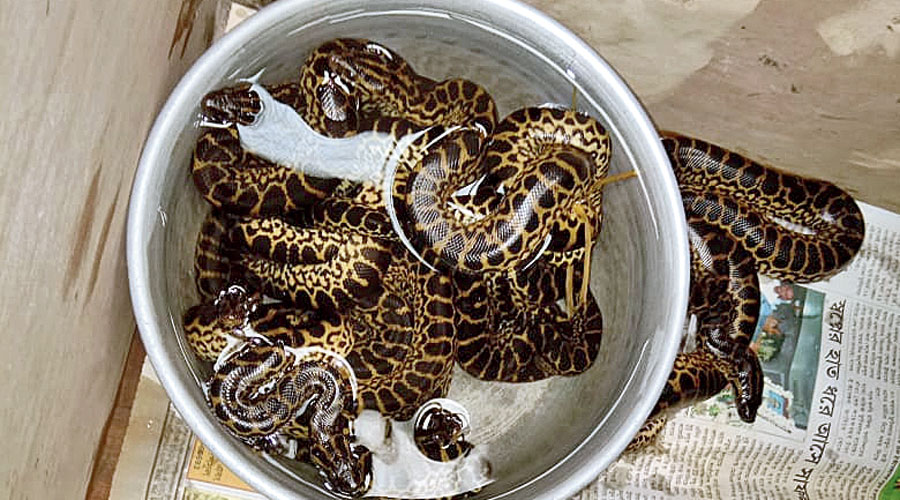Eleven babies born to a yellow anaconda are the centre of attention of the keepers and employees of Alipore zoo.
The babies and mother are doing fine, a zoo official said.
The mother is one of the four yellow anacondas that were brought to Alipore in June 2019 from the Madras Crocodile Bank and Centre for Herpetology in Mamallapuram, near Chennai, where they had been bred in captivity.
The snakes were born on July 10, the official said.
Their birth was announced on Thursday, World Snake Day.
Most snakes lay eggs. But some, like anacondas, don’t; instead, they give birth to babies.
The young are attached to a yolk sac and surrounded by a clear membrane, not a shell, as they develop in their mother’s body. When ready to be born, they come out of an opening near the tail called the cloaca.
“The naturalistic enclosure that we built for the anacondas, comprising water bodies, rocks and swamps, helped in the breeding,” V.K. Yadav, member-secretary, Bengal Zoo Authority, said.
The 50ft-long and 25ft-wide enclosure to the west of the zoo resembles a patch of an Amazon rainforest.
It is full of orchids, ferns and other tropical plants. A series of sprinklers attached to the roof trigger “artificial rain” multiple times a day. A stream of water dribbles past a series of rocks and flows into a water body, around 30ft long.
Yellow anacondas prefer aquatic habitats such as marshlands, swamps or banks of slow-moving rivers in tropical rainforests.
Yellow anacondas, found in Latin American countries such as Paraguay, Bolivia, Uruguay and Brazil are so named because of their yellow-green colour with pairs of overlapping oval black spots. The pattern of yellow and black scales on the underside of the lower tail is unique to each snake.
An adult yellow anaconda grows over 9ft but is half the size of green anacondas, which are one of the largest snakes in the world and can measure anything between 19ft and 30ft.
“The mother in Alipore zoo mated in April. The gestation period spans over six months,” a zoo official said.
The mother and babies have been kept in a separate enclosure adjacent to the anaconda enclosure. “We kept the snakes in containers. We plan to shift the mother back into the enclosure on Thursday. The babies will be kept in the adjacent shelter for some more days,” Asis Kumar Samanta, the zoo director, said.
“The snakes will help in exchange programmes with other zoological parks in the country,” Rajib Banerjee, Bengal forest minister, said.










